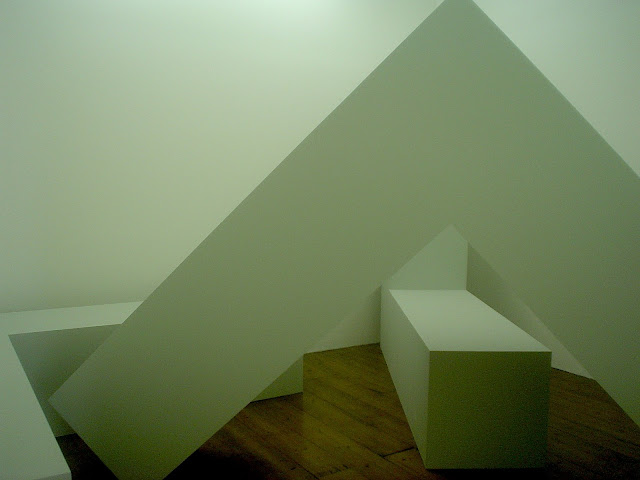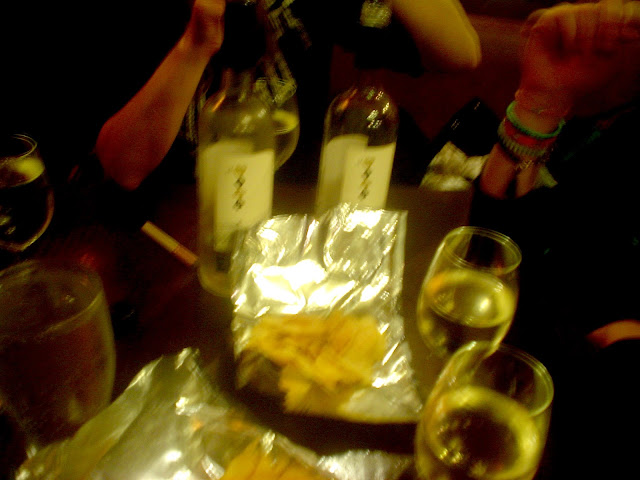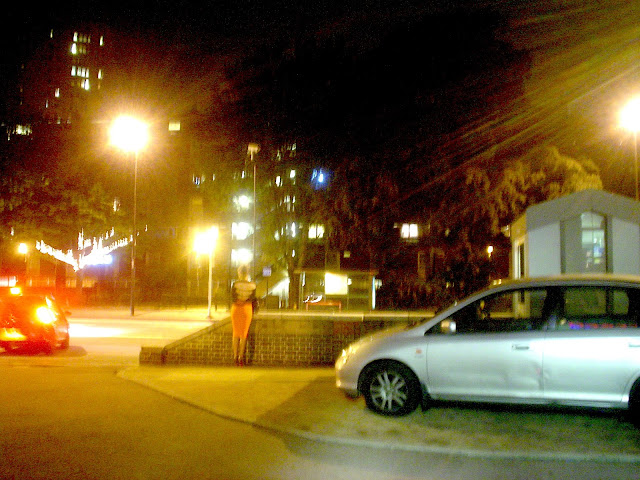Stephen Friedman Gallery (Londres)
Yinka Shonibare, MBE: POP!
Através do conjunto de peças concebidas e apresentadas na exposição
POP!, expostas na
Galeria Stephen Friedman (Londres), durante os meses de Março e Abril, Yinka Shonibare, MBE (1962) explora o fetichismo criado em torno dos bens de luxo, enquanto reflecte sobre o comportamento exuberante e inebriante do sector bancário durante a última década. Contudo, esta análise estende-se para além da mera crítica ao comportamento do sector bancário e à presente crise económica. Se, por um lado, revela as exuberâncias de um novo-riquismo, com séculos de existência, a viver sobretudo da teatralização social, das acções performáticas, a qual atravessa todas as classes sociais; por outro, considera e informa sobre as estruturas do pensamento ocidental.
A peça central da exposição, ‘
Last Supper (after Leonardo)’, de 2013 – 13 figuras apresentam-se-nos decapitadas, incluso a de uma figura híbrida, com pelos nas pernas e cascos, reunidas de um dos lados da mesa, sobre a qual estão espalhados talheres e candelabros de prata, reproduções de copos e louça, detritos de alimentos em fibra de vidro e resina – é uma subversão da representação na ‘
A Última Ceia’ (1495-1497), de Leonardo da Vinci (1452-1519), ao substitui a figura central, Cristo, por Baco.

 |
Leonardo da Vinci (1452-1519), Last Supper. 1495-1498.
Photographic reproduction: Copyright 2006-2007 HAL9000 S.r.l. |
A figura do Messias da igreja cristã é substituída pela figura do deus romano do vinho, dos ciclos vitais, das festas, da insânia, mas, sobretudo, da intoxicação que funde o bebedor com a deidade. Baco, tal como Cristo, é acompanhado por 12 discípulos, mas estes encontram-se decapitados e em poses e actos sexuais e animalescos enquanto usufruem de um sumptuoso banquete.
O comportamento devasso atribuído, de um modo particular, ao sector bancário, e, de uma forma geral, ao capitalismo desenfreado não está nas poses sexuais e animalescas como poderá ser percebido incipientemente no complexo quadro escultórico. Pois, enquanto a um nível, uma excelente refeição, prepara-se, apresenta-se e consome-se. Prevalece unicamente como memória de uma experiência. É efémera!; a outro nível, é, também, um universo de sensações, de disciplina e perfeccionismo natural atravessado de forma singular, e, durante o trajecto, é ter alguém com quem compartilhar.
A atitude comportamental desregrada, libertina, dissoluta existe, sim, no atribuir-mos as culpas da nossa condição ao outro! Seja com uma perspectiva upstream (a movermo-nos para uma posição mais próximo da origem) ou downstream (no sentido do movimento em que a sociedade progride).
Esta é uma sociedade mais preocupada em consumir do que em compreender; em adicionar ao invés de produzir; de julgar ao invés de procurar interpretar e de fomentar e estabelecer novos limites no campo das possibilidades. O comportamento social contemporâneo está mais preocupado com a vaidade social, e é reflectido no consumo de bens materiais como casas, carros, iates, relógios e telemóveis, computadores, viagens, roupas de marca, mas, também, parceiras(os), livros e música (tanto fisicamente como virtualmente), culturas, identidades, e, ainda, nos movimentos universais sobre os receios ambientais, humanitários e educacionais: com a mesma distância e ilusão com que frequentamos um parque temático percorremos, por outro lado, as ruas de uma cultura por conhecer no outro lado do mundo; a leviandade com que aplicamos os “Gostos”, ou fazemos um comentário numa qualquer plataforma social, é introduzida nas decisões que dizem respeito ao quotidiano e à nossa forma de viver; a atitude espontânea com que adquirimos um café, e compramos a redenção para a nossa culpa ao suportar causas humanitárias em África, América do Sul ou Ásia, no entanto o melhor café não está no estabelecimento comercial que suporta essa causa ou no café bairro, mas no espaço geográfico para onde projectamos a nossa culpa e desprendemo-nos de assuntos de cariz humanitário.

Que é o que a segunda parte da exposição explora. A instalação ‘
Blind Paintings’ (2013) é composta por um conjunto de painéis redondos sobre uma tela pintada a dourado. Os painéis estão emoldurados por uma multitude de brinquedos que se relacionam com a variedade de temas que ocupam a sociedade, guerra, luxo, religião: armas de brincar, figuras militares, sapatos, malas, diamantes falsos, crucifixos, etc. A multitude de painéis representa o fetichismo pela guerra e pelo dinheiro, ao mesmo tempo que desejamos e repelimos tais objectos de beleza culpável.
POP! Não apresenta apenas algum do mais ambicioso trabalho de Shonibare, como também reflecte o compromisso do artista com o comentário social.
A ausência das cabeças nas figura da instalação escultórica, ‘
Last Supper (after Leonardo)’, não pode ser interpretada como um decapitar de responsabilidades ou , mesmo, um destituir-nos da história civilizacional incómoda, mas, sim, o oposto, indicia a presença de todos nós em redor da mesa, a comungar da mesma vaidade social, devassidão e perversão de um modo desprendido. Independentemente da nossa posição social, política ou religiosa, da cor da nossa pele ou das preferências sexuais.
Neste sentido, uma obras apresentadas por Shonibare têm uma força emocional que ao exprimem-se através de uma estrutura de desequilibro, dialogam ao nível do conceptual, do intangível, das questões subjectivas relacionadas com a felicidade e o prazer, sobre o proibido e a culpa. Actualmente, a arte contemporânea, está centrada no debate articulado entre a produção de subjectividades e a forma como compreendermos a contextualização do sujeito mediada por diferentes culturas sociais. Neste campo é criado um diálogo entre a obra e o observador sobre a realidade como um acto violento, composto por desequilíbrios.
Uma grande retrospectiva da carreira de Yinka Shonibare, MBE, com obras concebidas entre 2002 e 2013, está presente no
Yorkshire Sculpture Park (Wakefield, West Yorkshire). A retrospectiva termina no dia 1 de Setembro de 2013.
Images: Installation views. Copyright the artist. Images courtesy of the artist and Stephen Friedman Gallery, London. Photography Stephen White.Published at Molduras: as artes plásticas na Antena 2: Yinka Shonibare, MBE: POP!















































